| Listing 1 - 10 of 35 | << page >> |
Sort by
|
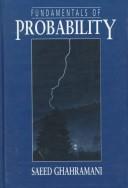
ISBN: 0130657980 Year: 1996 Publisher: Upper Saddle River, N.J. Prentice Hall
Abstract | Keywords | Export | Availability | Bookmark
 Loading...
Loading...Choose an application
- Reference Manager
- EndNote
- RefWorks (Direct export to RefWorks)
Book
Year: 1996 Publisher: Cambridge, Mass. National Bureau of Economic Research
Abstract | Keywords | Export | Availability | Bookmark
 Loading...
Loading...Choose an application
- Reference Manager
- EndNote
- RefWorks (Direct export to RefWorks)
This paper considers the estimation of the variance of coefficients in time varying parameter models with stationary regressors. The maximum likelihood estimator has large point mass at zero. We therefore develop asymptotically median unbiased estimators and confidence intervals by inverting median functions of regression-based parameter stability test statistics, computed under the constant-parameter null. These estimators have good asymptotic relative efficiencies for small to moderate amounts of parameter variability. We apply these results to an unobserved components model of trend growth in postwar U.S. GDP: the MLE implies that there has been no change in the trend rate, while the upper range of the median-unbiased point estimates imply that the annual trend growth rate has fallen by 0.7 percentage points over the postwar period.
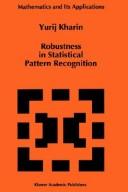
ISBN: 0792342674 Year: 1996 Publisher: Dordrecht Kluwer
Abstract | Keywords | Export | Availability | Bookmark
 Loading...
Loading...Choose an application
- Reference Manager
- EndNote
- RefWorks (Direct export to RefWorks)
Book
Year: 1996 Publisher: [Place of publication not identified] Institute of Mathematical Statistics
Abstract | Keywords | Export | Availability | Bookmark
 Loading...
Loading...Choose an application
- Reference Manager
- EndNote
- RefWorks (Direct export to RefWorks)
Mathematical statistics --- Distribution (Probability theory) --- Game theory
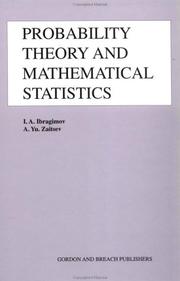
ISBN: 2919875140 Year: 1996 Publisher: Amsterdam : Gordon and Breach,
Abstract | Keywords | Export | Availability | Bookmark
 Loading...
Loading...Choose an application
- Reference Manager
- EndNote
- RefWorks (Direct export to RefWorks)
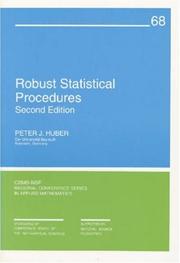
ISBN: 089871379X Year: 1996 Publisher: Philadelphia, Pa Society for Industrial and Applied Mathematics
Abstract | Keywords | Export | Availability | Bookmark
 Loading...
Loading...Choose an application
- Reference Manager
- EndNote
- RefWorks (Direct export to RefWorks)
Mathematical statistics --- 519.21 --- #TELE:SISTA --- Probability theory. Stochastic processes --- 519.21 Probability theory. Stochastic processes --- Distribution (Probability theory) --- Robust statistics --- Statistics, Robust --- Distribution functions --- Frequency distribution --- Characteristic functions --- Probabilities
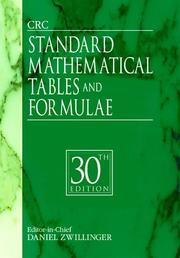
ISBN: 0849324793 Year: 1996 Publisher: Boca Raton, Fla CRC Press
Abstract | Keywords | Export | Availability | Bookmark
 Loading...
Loading...Choose an application
- Reference Manager
- EndNote
- RefWorks (Direct export to RefWorks)
Mathematical analysis --- Planning (firm) --- Mathematics --- Probability theory --- Mathématiques --- tables. --- Tables --- Mathématiques
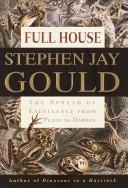
ISBN: 0517703947 Year: 1996 Publisher: New York, N.Y. Harmony Books
Abstract | Keywords | Export | Availability | Bookmark
 Loading...
Loading...Choose an application
- Reference Manager
- EndNote
- RefWorks (Direct export to RefWorks)
Philosophy of nature --- Probability theory --- Evolution (Biology) --- Excellence. --- Natural history. --- Nature. --- Evolution (Biology).
Book
ISBN: 0849382866 Year: 1996 Publisher: Boca Raton, FL : CRC Press [Chemical Rubber Company],
Abstract | Keywords | Export | Availability | Bookmark
 Loading...
Loading...Choose an application
- Reference Manager
- EndNote
- RefWorks (Direct export to RefWorks)
Structural design. --- Reliability (Engineering) --- Constructions --- Fiabilité --- Calcul --- Fiabilité --- Design --- Safety. --- Safety --- Probability theory
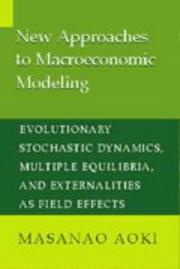
ISBN: 0521482070 0521637694 0511664672 0511887620 9780521482073 9780521637695 9780511664670 Year: 1996 Publisher: Cambridge: Cambridge university press,
Abstract | Keywords | Export | Availability | Bookmark
 Loading...
Loading...Choose an application
- Reference Manager
- EndNote
- RefWorks (Direct export to RefWorks)
This book contributes substantively to state-of-the-art macroeconomic modeling by providing a method for modeling large collections of heterogeneous agents subject to non-pairwise externality called field effects, i.e. feedback of aggregate effects on individual agents or agents using state-dependent strategies. Adopting a level of microeconomic description which keeps track of compositions of fractions of agents by 'types' or 'strategies', time evolution of the microeconomic states is described by (backward) Chapman-Kolmogorov equations. Macroeconomic dynamics naturally arise by expansion of the solution in some power series of the number of participants. Specification of the microeconomic transition rates thus leads to macroeconomic dynamic models. This approach provides a consistent way for dealing with multiple equilibria of macroeconomic dynamics by ergodic decomposition and associated calculations of mean first passage times, and stationary probabilities of equilibria further provide useful information on macroeconomic behavior.
Macroeconomics --- Mathematical models --- -Probability theory. Stochastic processes --- -519.21 Probability theory. Stochastic processes --- 519.21 --- Probability theory. Stochastic processes --- Economics --- Mathematical models. --- 339 --- 330.3 --- AA / International- internationaal --- Methode in staathuishoudkunde. Statische, dynamische economie. Modellen. Experimental economics --- -Economics --- -Mathematical models --- 519.21 Probability theory. Stochastic processes --- Business, Economy and Management --- Macroeconomics - Mathematical models --- MACROECONOMICS --- MATHEMATICAL MODELS
| Listing 1 - 10 of 35 | << page >> |
Sort by
|

 Search
Search Feedback
Feedback About UniCat
About UniCat  Help
Help News
News